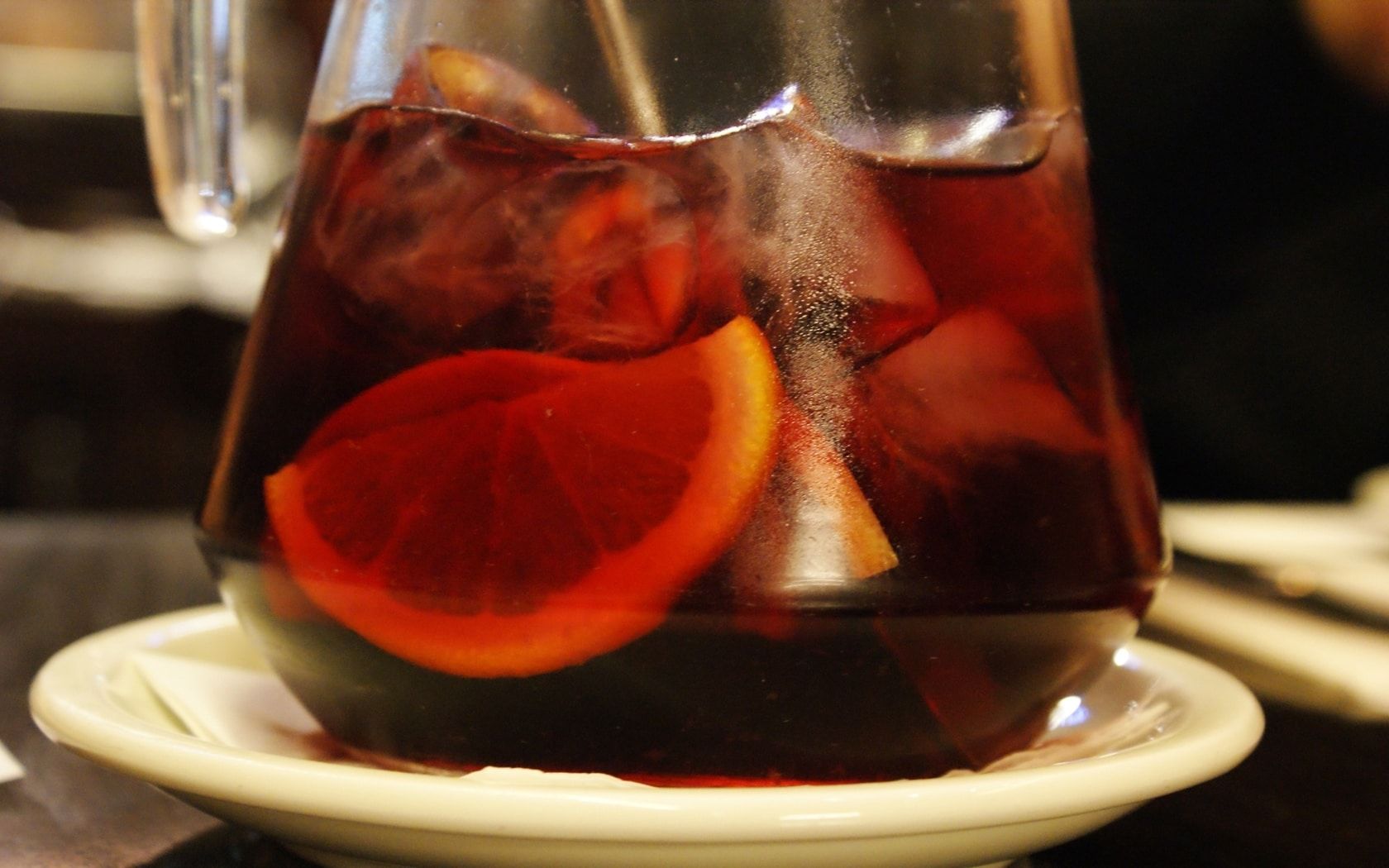While sangria is generally viewed as Spain’s national drink, ask any local in Madrid and they’ll tell you that they hardly ever drink the stuff. And, if you ask us, there are better things to get you drunk in Spain than this famous sweet mix of red wine, fruit, sugar, brandy, and sometimes orange juice. Here are 7 reasons why you shouldn’t drink sangria in Madrid.
1. It’s an overpriced, tourist drink

Even if we are one, none of us like to be labeled as a stereotypical tourist (insert image of a loudly spoken person wearing a printed shirt, sandals and a fanny packs and waving around a guide book) but sangria is most commonly found in those overpriced, unauthentic restaurants with photo menus in English. It’s just not the drink of choice for the Spanish locals, particularly in Madrid. It’s only really drunk on special occasions, if at all. It’s like the Spanish equivalent to punch, the sweet party drink often served at a house party made from cheap alcohol that has to be flavored to make it drinkable. You would never choose to drink punch in a bar now would you?
2. It’s hard to get good sangria in a bar in Madrid
Would you even be able to tell good sangria from bad sangria? Most people who are drinking it don’t know any better. This means that any bar that serves it will most likely scrimp on ingredients. We’re not saying the bars are out to trick you. But, considering few Spanish people drink sangria in a bar, you might not even see it on the menu and, if you ask for it, the barman might not have all the ingredients to hand but won’t want to lose a sale so will probably make you a cheap imitation. If you’re in a touristy bar where it’s on the menu, they may just assume you don’t know what’s in it and serve a watered down version of the drink (minus the brandy) mixing red wine and lemonade with fruit.
3. Tinto de verano is better

Spanish wine is good enough to drink on its own but the Spanish do like to play around with their wine. If you want to drink something typically Spanish, tinto de verano literally (‘summer wine’) is the local drink of choice, particularly in the hot summer months. It’s a simpler, fizzier version of sangria (that often gets mistaken for sangria) consisting of red wine, ice and Fanta limón. It’s more refreshing and less sweet. The locals also refer to it as tinto con limón.
4. Sangria is a beach drink

This type of sweet, fruity cocktail is better consumed on a leisurely afternoon at a fancy beach bar or on the sand reclining under an umbrella. Madrid doesn’t have a beach and sipping on this beach drink in a crowded Madrid bar at nighttime doesn’t have quite the same appeal.
5.It’s really very sweet
Sangria is a very sweet, sugary drink, a little too sweet for most peoples’ palates. Even after one glass of it, you’ll start to feel that gross sticky film on your teeth. And, if made properly, it’s very alcoholic so expect a pounding headache the morning after.
6. The drink owes its fame to US cocktail bars

While sangria’s roots are surely Spanish, the wine-based drink really has the US to thank for its popularity. According to food historians, sangria was originally brought to the Americas in the early 1800s. Since then, Americans have fully embraced the Spanish cocktail and many cocktail bars have their own signature version of sangria and the more inventive the better, from a mango sangria to a spiced strawberry sangria. The Spanish cocktail scene is lagging behind, particularly when it comes to sangria. And while Madrid has some great cocktail bars, we suggest you order a mojito instead.
7. Historically, the Romans drank it to kill off bacteria in water
When the Romans were coming through the Iberian Peninsula some 2,000 years ago, they planted vineyards along the way to make wine. Since water at that time wasn’t safe for drinking, they would mix it with wine so that the alcohol would kill off the bacteria. The first sangria (whose name derives from the word sangre which describes its dark red color) was a heavily diluted mix of wine, water, spices and anything else they could think of to disguise the taste. Still fancy that sangria?
Got anything else to add about drinking sangria in Madrid? Share your comments with our readers in the section below.
Originally published on Ailola by Sophie Lloyd on January 29, 2019.
